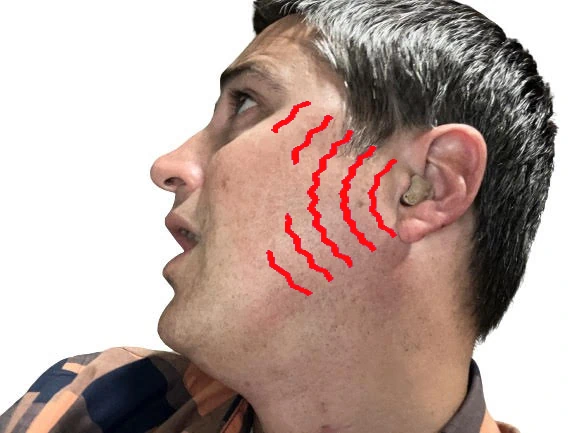Hearing aid technology has been rapidly advancing over the years, leaving behind the days where feedback used to be a prevalent issue. This article charts the journey of hearing aid feedback cancellation systems, their evolution, and how the problem has been addressed over the years.
The Age of No Feedback Systems in Hearing Aids
In the era before digital circuits in hearing aids, the only methods to prevent feedback were to adjust the earmold or dome to fit tightly in the ear canal. However, this often led to uncomfortable volume levels and annoying feedback. Regrettably, some low-cost hearing amplifiers today still lack any feedback system.
Introduction of Phase Cancelling Feedback Systems
In 1999, Danovox pioneered the industry’s first feedback reduction system. After being swiftly acquired by GN Resound, the first robust hearing aid featuring feedback suppression was the Resound Canta BTE hearing aid.
The system employed the concept of destructive interference to cancel out feedback noise. However, this rudimentary system would often inaccurately cancel environmental noises as well, such as a microwave beep, and was relatively slow to react. Thankfully, advances in computer chip technology have improved these early systems.
The Next Step: Capping A Channel
Recognizing that a hearing aid’s squeal typically occurs in one frequency band or channel, the technology evolved to focus on these areas. When one band’s volume spiked significantly higher than the others, an artificial cap was applied to prevent an increase in volume and limit high-pitched whistling. This was an advancement, but it still didn’t entirely eliminate the problem.
Oticon’s Attempt With A Binaural Feedback System
With the simple phase inversion or cancellation feedback method, true sounds were often distorted, cancelled, or echoed, causing an unnatural user experience. To address this, Oticon tried using wireless functions to communicate between the hearing aids on either side of the user’s head.
The idea was that if one hearing aid detected potential feedback, it would check with the other hearing aid to verify if it was picking up the same noise. If the other hearing aid didn’t detect the sound, the system would conclude it was feedback and suppress it. However, this method was flawed as it could lead to inaccurate feedback detection. The new Oticon system has since greatly improved upon this.
Signal Tagging: A New Approach to Feedback Reduction
Next came the introduction of signal tagging. In this technique, manufacturers began tagging acoustical signals to determine if a sound had already been amplified. A high-pitched sound would be added to whatever sound was played in the ear canal. If the computer chip detected this high-pitched signal in the microphones, it knew that feedback could be occurring and would limit the volume to stop it. This method still had the downside of limiting volume, which is not ideal for those with hearing impairment.
Frequency Shifting: A Game-changing Breakthrough
The game-changing innovation came with frequency shifting. In this technique, the hearing aid shifts all frequencies above a certain point higher by a specific amount. For example, all frequencies above 1,500Hz might be shifted up by 6Hz. The tiny difference is generally not detectable by the human ear.
By shifting the frequencies, a feedback loop is effectively broken, allowing hearing aids to offer a more open and natural experience without the drawback of feedback. However, this method also had some limitations, such as being ineffective for low-frequency feedback and slight distortion of the frequency spectrum.
Combination of Methods For Truly Effective Feedback Management Systems
Today, modern high-end professionally fit hearing aids employ multiple methods, such as frequency shifting, acoustical tagging, and output limiting, to effectively prevent feedback from occurring. The settings of these advanced systems can be tailored by your audiologist to customize your hearing aids to your specific needs.
In conclusion, advancements in hearing aid feedback management systems have led to a significant improvement in user experience. Even self-fit over-the-counter hearing aids may offer options to adjust the feedback management system in their controlling apps. However, remember that even the most advanced hearing aid can provide feedback if the system settings are not correctly configured.

